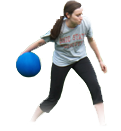
HIIT vs. LISS: Pick the Best Cardio to Peel Off the Pounds

HIIT vs. LISS: Pick the Best Cardio to Peel Off the Pounds
Because we know it’s been your New Year’s resolution since 2003
Around the holiday season, many people start to notice the scale steadily creeping up. After admitting defeat and wearing jeggings for a few weeks, a fresh hoard of people flock to the gym, resolving that this is the year to finally lose weight and get back in shape. While the desire to get healthy is commendable, most people don’t know where to begin. At the turn of the new year, the treadmills and interval classes are packed, but does one type of cardio trump another when it comes to getting results?
Many are surprised to discover that there are, in fact, different forms of cardiovascular exercise that raise the heart rate and improve oxygen uptake in the body. Cardio not only improves muscle endurance—the duration for which muscles are able to work before fatiguing—but it also helps to reduce weight. However, simply doing 30 minutes of cardio every other day doesn’t necessarily take into account how to achieve desired results.
HIIT workouts have periods of high-intensity exercise followed by periods of low-intensity recovery, thus incorporating the anaerobic and aerobic systems of the body. HIIT has been celebrated for its ability to encourage fat loss while also building lean muscle. It’s a great cardio choice for those already in good shape who are seeking to “lean out” without losing muscle mass. Because of it’s high intensity nature, HIIT workouts typically last 20 to 45 minutes, so it may make sense for those with limited time to workout. According to Medical Daily, studies show that 27 minutes of HIIT done three times per week produces the same anaerobic and aerobic effects as 60 minutes of moderate cardio done five times per week. Even though the scale may not change drastically, body composition can as fat loss from HIIT begins revealing muscle tone.
However, while HIIT burns calories at a higher rate and for a longer period after the workout itself, it’s extremely taxing on the body and requires more recovery time. HIIT also poses a high risk of injury, especially when adequate rest is not observed. Additionally, many who use HIIT end up consuming a great deal more calories than they usually would, because of increased hunger as well as a tendency to overestimate the number of calories burned. After all, 600 calories in an hour is doable with HIIT, but it’s still not enough to cover a burger, drinks and dessert.
LISS isn’t HIIT’s outdated cousin; it offers a different set of benefits. LISS workouts, which generally last for 20-60 minutes, maintain the same intensity throughout, yet only involve the aerobic system (requiring oxygen). LISS workouts require less recovery time, meaning that many individuals can incorporate the training five to six days a week, as opposed to two to three days per week for HIIT. Additionally, for individuals looking to reduce muscle mass, LISS may be more useful, as HIIT builds and maintains lean muscle mass. While muscular strength is important, some individuals may develop muscular imbalances, like the large quadriceps frequently seen on sprinters of any sport (hello, HIIT!). For this reason, many women who compete in physique competitions, for example, use LISS, or a combination of LISS and HIIT throughout the week, to create a more balanced overall look. LISS can be useful for reducing muscle as well as fat, if those are your needs, although LISS will require more time working out and longer to see results, which can feel tedious for some.
Once you decide whether HIIT or LISS is right for you, it’s important to take note of your heart rate in order to stay on track with your training. First, calculate your maximum heart rate, by subtracting your age from the number 220. Next, multiply your max heart rate by the desired percentage to find what your heart rate should be for your training type. For HIIT workouts, aim to work at or slightly above 85 percent of your max heart rate during the work phases, and for LISS bouts try to keep your heart rate at or just below 65 percent of your max heart rate. A simple heart rate monitor and chest strap will ensure you stay in the ideal zone for either HIIT or LISS to keep you in line with your goals and fitness objectives.
Before stocking up on trendy tanks for 2017, take stock of your current routine and decide if changing up your cardio habits may help you reach your fitness goals. If so, invest in a heart rate monitor, set up a plan to incorporate HIIT, and know the science behind your cardio. Guesstimating may work for Grandma’s eggnog recipe, but being precise with how you spend your time sweating will ensure 2017 really is the year you make it happen.
By • 01/06/17
Chelsea Vincent has been teaching fitness for almost ten years. Prior to teaching, she had 15 years of formal dance training. Chelsea has a BFA from Carnegie Mellon University and is a certified power yoga instructor, spinning instructor, barre instructor, and weightlifting Instructor, as well as an ACE-certified personal trainer and wellness specialist.




